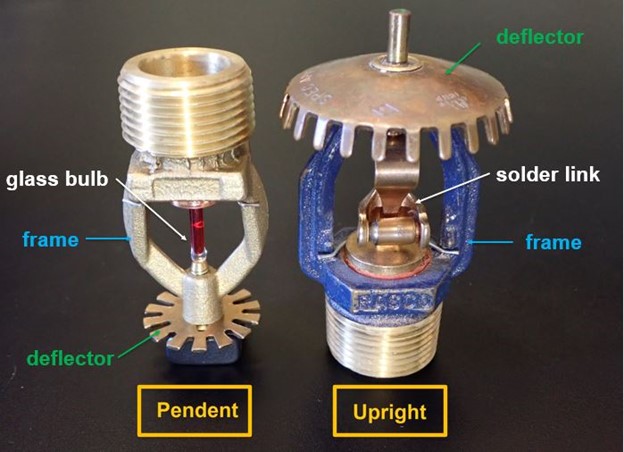Know a Fire Sprinkler, Like a Boss – Part 2
Leave a CommentIn Part 1, we looked at the basic parts of a fire sprinkler and took a closer look at other parts including heat responsive elements, wrench bosses, and kick springs. In this part, we’ll look at k-factors and deflectors.
K-Factor and Orifice Size
K-factor is a characteristic that relates water pressure to flow rate from the sprinkler, represented as k in the equation Q = k√P, where Q is flow (gpm) and P is pressure (psi).
If we supply water at 50 psi to a k-factor 5.6 sprinkler, the flow rate is 40 gpm. If we supply 50 psi water to a K25 sprinkler, the flow rate is 177 gpm. There are now sprinklers as large as K33.6, which would flow 238 gpm given 50 psi – big difference from the K5.6!
The most common k-factors are 5.6, 8.0, 11.2, 14, 16.8, 22.4 and 25. There are smaller and larger k-factors than these. For reference, K5.6 and possibly K8.0 are most often found in (more…)




